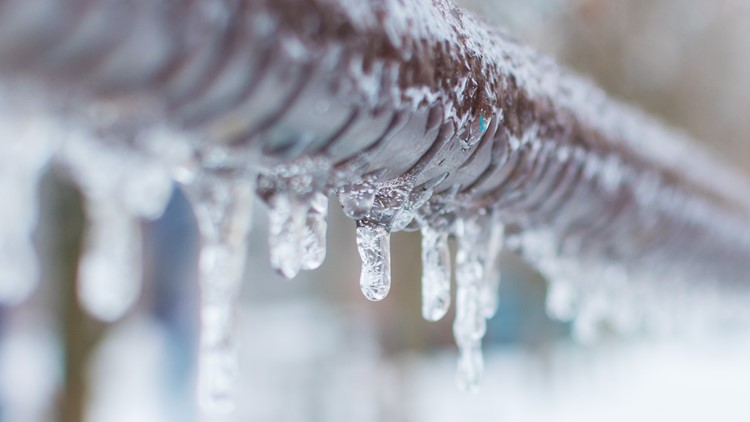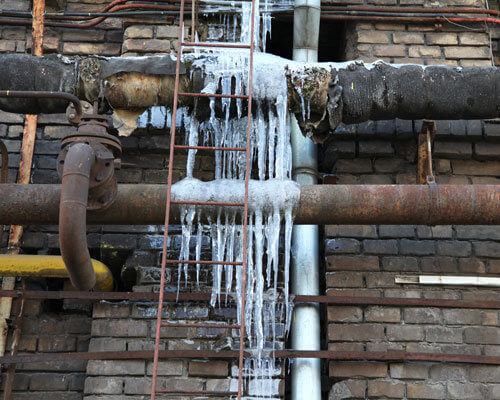Preventing Frozen Pipes in Cold Weather: Expert Strategies
Preventing Frozen Pipes in Cold Weather: Expert Strategies
Blog Article
We've unearthed this article involving 6 Ways to Prevent Frozen Pipes listed below on the web and felt it made perfect sense to discuss it with you on my blog.

Cold weather can damage your pipes, particularly by freezing pipelines. Below's exactly how to prevent it from happening and what to do if it does.
Intro
As temperature levels drop, the threat of frozen pipelines boosts, potentially leading to expensive repairs and water damage. Comprehending exactly how to stop icy pipes is vital for property owners in cold environments.
Avoidance Tips
Shielding at risk pipes
Wrap pipelines in insulation sleeves or use warm tape to safeguard them from freezing temperature levels. Focus on pipelines in unheated or external locations of the home.
Home heating techniques
Keep indoor spaces effectively heated up, specifically locations with pipes. Open up closet doors to allow warm air to distribute around pipes under sinks.
Exactly how to identify frozen pipelines
Seek reduced water circulation from faucets, unusual smells or noises from pipes, and visible frost on revealed pipes.
Long-Term Solutions
Structural changes
Think about rerouting pipelines far from exterior wall surfaces or unheated locations. Add additional insulation to attic rooms, cellars, and crawl spaces.
Upgrading insulation
Buy top notch insulation for pipelines, attics, and walls. Appropriate insulation helps keep regular temperatures and lowers the danger of frozen pipes.
Protecting Outside Plumbing
Garden hose pipes and outside taps
Disconnect and drain pipes yard hoses prior to wintertime. Install frost-proof faucets or cover exterior taps with insulated caps.
Recognizing Frozen Pipelines
What creates pipelines to ice up?
Pipelines freeze when subjected to temperatures listed below 32 ° F (0 ° C) for extended periods. As water inside the pipes ices up, it increases, taxing the pipe walls and potentially creating them to rupture.
Threats and problems
Frozen pipes can cause water disturbances, residential property damages, and pricey repair work. Ruptured pipelines can flood homes and trigger substantial architectural damage.
Indications of Frozen Piping
Identifying frozen pipes early can prevent them from bursting.
What to Do If Your Pipes Freeze
Immediate actions to take
If you believe frozen pipes, keep faucets open up to alleviate stress as the ice thaws. Use a hairdryer or towels taken in warm water to thaw pipelines slowly.
Conclusion
Avoiding frozen pipes needs positive actions and quick responses. By comprehending the reasons, signs, and safety nets, property owners can safeguard their plumbing throughout cold weather.
5 Ways to Prevent Frozen Pipes
Drain Outdoor Faucets and Disconnect Hoses
First, close the shut-off valve that controls the flow of water in the pipe to your outdoor faucet. Then, head outside to disconnect and drain your hose and open the outdoor faucet to allow the water to completely drain out of the line. Turn off the faucet when done. Finally, head back to the shut-off valve and drain the remaining water inside the pipe into a bucket or container. Additionally, if you have a home irrigation system, you should consider hiring an expert to clear the system of water each year.
Insulate Pipes
One of the best and most cost-effective methods for preventing frozen water pipes is to wrap your pipes with insulation. This is especially important for areas in your home that aren’t exposed to heat, such as an attic. We suggest using foam sleeves, which can typically be found at your local hardware store.
Keep Heat Running at 65
Your pipes are located inside your walls, and the temperature there is much colder than the rest of the house. To prevent your pipes from freezing, The Insurance Information Institute suggests that you keep your home heated to at least 65 degrees, even when traveling. You may want to invest in smart devices that can keep an eye on the temperature in your home while you’re away.
Leave Water Dripping
Moving water — even a small trickle — can prevent ice from forming inside your pipes. When freezing temps are imminent, start a drip of water from all faucets that serve exposed pipes. Leaving a few faucets running will also help relieve pressure inside the pipes and help prevent a rupture if the water inside freezes.
Open Cupboard Doors
Warm your kitchen and bathroom pipes by opening cupboards and vanities. You should also leave your interior doors ajar to help warm air circulate evenly throughout your home.

As a passionate person who reads about How To Avoid Freezing Pipes, I was thinking sharing that chunk was worth the trouble. For those who liked our blog post please consider to share it. Thanks a lot for your time. Don't hesitate to come by our website back soon.
Show Details Report this page